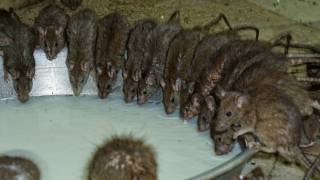Hemorrhagic Fever Reduced With Hantavirus Vaccine Candidate

Since there is no effective treatment for hemorrhagic fever with renal syndrome (HFRS), the development of an effective vaccine has been a worldwide goal to achieve.
During 2017, the Centers for Disease Control and Prevention (CDC) investigated an outbreak of a hantavirus infection that infected 17 people in 11 states.
There is no specific treatment, cure, or FDA-approved vaccine for hantavirus infection.
Intravenous ribavirin, an antiviral drug, has been shown to decrease illness and death associated with HFRS if used very early in the disease, said the CDC.
Hemorrhagic fever with renal syndrome is a group of clinically similar illnesses caused by hantaviruses, from the family Bunyaviridae.
About 100,000 cases of hantavirus are reported annually and mainly infects human vascular endothelial cells and cause extensive damage to capillaries and small vessels.
The main transmission pathway is from rodents to humans. Person-to-person transmission has not been found.
In a recent case-control study in Korea to evaluate the vaccine effectiveness (VE) of inactivated hantavirus vaccine (IHV) against HFRS, the VE was reported to be approximately 60 percent.
The unadjusted and adjusted VE of IHV was 59.1% and 58.9%, respectively.
Additionally, the VE was higher in divisions with a high incidence of HFRS (unadjusted VE, 71.4%; adjusted VE, 78.7%).
These findings are important because they show a degree of protection against hemorrhagic fever with renal syndrome, which has no effective treatment, says the CDC.
HFRS includes diseases such as Korean hemorrhagic fever, epidemic hemorrhagic fever, and nephropathia epidemica.
In the Americas, hantaviruses cause a different disease known as hantavirus pulmonary syndrome.
The viruses that cause HFRS include Hantaan, Dobrava, Saaremaa, Seoul, and Puumala:
- Haantan virus is widely distributed in eastern Asia, particularly in China, Russia, and Korea,
- Puumala virus is found in Scandinavia, western Europe, and western Russia,
- Dobrava virus is found primarily in the Balkans,
- Seoul virus is found worldwide,
- Saaremaa is found in central Europe and Scandinavia.
These researchers said, “To our knowledge, this is the first study that demonstrated a statistically significant effectiveness of IHV in a real-world setting.”
These researchers did not disclose any conflicts of interest: Jaehun Jung, Sung-Jun Ko, Hong Sang Oh, Song Mi Moon, Jin-Won Song, Kyungmin Huh.
Our Trust Standards: Medical Advisory Committee


